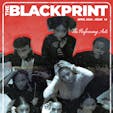BY: AWAIS AHMAD
"The Big Bang Theory" has been on the air for an impressive 11 seasons. "Master of None" was nominated for multiple Emmy awards, and took one home this year. The movie"The Big Sick" was a commercial and critical success. But what these each have in common is not only that they are critically acclaimed, but they also contain skewed depictions of South Asian characters.
Raj from "The Big Bang Theory" is a stereotypical caricature of how South Asian immigrants have been and are still viewed in America. It only took me one episode to realize that I wanted no part of that show in my life. Raj has a thick accent, a nerdy personality and cannot talk to women (unless he is drunk, of course). Raj is seen as humorous to his American counterparts, reflecting a larger reality of how many Americans see South Asians.
In this age of woke and socially conscious culture, breaking off from those stereotypes is considered a successful feat. That is why "Master of None" and "The Big Sick" have received such high praise. Although both have managed to break away from many of the stereotypes seen in "The Big Bang Theory," they suffer because assimilation is often the answer to the main characters' biggest problems.
In "The Big Sick," this was evident in the idea of arranged marriage. The main character Kumail's parents are callously depicted as overbearing; they are one-dimensional characters. Although the movie addresses the struggle of choosing between family and individualism, the movie still portrays the family—something extremely important in South Asian cultures—as an obstacle to overcome.
While "Master of None" attempts to address these types of issues in the "Parents" and "Religion" episodes, it, too, told a story of assimilation as the final answer. The main character Dev's parents are shown as silly, technologically inept and simplistic; their portrayal lacked complexity and reduced them to belittling caricatures. This was especially frustrating in "Religion." In this episode, Dev introduces his cousin to pork, a narrative that showed a postmodern way of being Muslim, where eating pork and drinking are celebrated (both are generally forbidden in the Qur'an). My issue with this is that it also showed a divide between "liberal" Muslims like Dev and his cousin and more traditional, presumably "strict," Muslims.
This is not representative of real life. I pass no judgment on Muslims that drink alcohol or eat pork. It is not my place to do so. I also don't alienate them because of their choices. But the show attributes an inappropriate sense of superiority and sanctimony onto traditional Muslims when that should not be the case.
Both "The Big Sick" and "Master of None" are critical of traditionalism. Looking at South Asian culture or Islam through this lens invalidates the experiences of those who do subscribe to the traditional aspects of the religion. It is unfortunate that in an attempt to divert from stereotypical narratives that confirm the fallacious preconceived notions of Americans, we managed to arrive at postmodern narratives that cater to an American audience that is only willing to accept us in our fully assimilated form.
What kind of message do these narratives send to someone like me? I am very traditional, but I am not stereotypical. I still want to explore my individualism, but I am willing to do so within the confines of my parents' expectations, or at least, try to figure out how to maintain that balance. The nuances of my experience are missing from the screen.
I wouldn't have a hard time celebrating these narratives if I didn't know who was celebrating these narratives: a mostly Western liberal audience. This is an audience that does not allow complexity. Members of this audience accept these narratives because of their savior complex. To them, assimilation means South Asians being saved from the perceived hindrances of their culture. To them, South Asian culture and Islam are both antagonists in the story of South Asians and Muslims.
Assimilation is not the only solution. The idea of assimilation as the final solution is born out of Western ideals, and just getting a seat at the table is not enough. It is not my place to say whether assimilation works or not. For some, it might. My issue is that these narratives don't allow for pluralism within the Muslim and South Asian communities. Under the guise of diversifying the narratives that it tells, all Hollywood has managed to do is further promote a dichotomy of either stereotypical or fully assimilated South Asian narratives, creating additional divisions within both communities. It is important to showcase more nuanced narratives by South Asians and Muslims that are also for South Asians and Muslims. There is an audience for these narratives, and it eagerly awaits them.
Awais is a freelance writer for The Blackprint.
Feature photo by Dollar Gill on Unsplash


